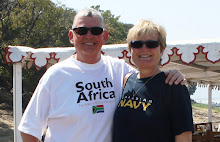 The very name Mandalay conjures up evocative images of a bygone era. The truth is that the former royal capital of Burma, now Myanmar, is a bit of a grubby town located on a wide bend in the Irrawaddy River. Nevertheless it remains a fascination.
The very name Mandalay conjures up evocative images of a bygone era. The truth is that the former royal capital of Burma, now Myanmar, is a bit of a grubby town located on a wide bend in the Irrawaddy River. Nevertheless it remains a fascination. For one, the magnificent carved teak monastery of Shwe Nandaw Kyaung, the last remaining remnant of the old Mandalay Palace destroyed during World War II bombing.
For one, the magnificent carved teak monastery of Shwe Nandaw Kyaung, the last remaining remnant of the old Mandalay Palace destroyed during World War II bombing. It’s still possible to get the feel of what the original palace grounds must have been like by walking the expansive moat sided walkways in the shadow of Mandalay Hill.
It’s still possible to get the feel of what the original palace grounds must have been like by walking the expansive moat sided walkways in the shadow of Mandalay Hill.Kuthodaw Pagoda is another amazing site: dotted with small white pagodas housing 729 marble pillars inscribed with Buddhist scriptures - reputed to be the world’s largest book.

 Directly across the river from our berth in Mandalay lies Myanmar’s spiritual capital, Sagaing. Nestled amongst the many pagodas and trees on the hillside are monasteries providing meditation centres for thousands of monks, nuns and others who come to the area to retreat. The view from the mirror-encrusted pagoda at the top of Sagaing's hill is impressive.
Directly across the river from our berth in Mandalay lies Myanmar’s spiritual capital, Sagaing. Nestled amongst the many pagodas and trees on the hillside are monasteries providing meditation centres for thousands of monks, nuns and others who come to the area to retreat. The view from the mirror-encrusted pagoda at the top of Sagaing's hill is impressive.In Mandalay the riverboat's berth is at the village of Shwe Kyet Yet and just after daybreak one morning we walk the village's winding alleyways to watch the monks collect alms at the steps of a 12th century pagoda.
 Novice monks wait patiently for their turn.
Novice monks wait patiently for their turn.Many Myanmar boys enter a monastery by age 9 and can leave once they have learned basic scripture and Buddhist conduct. By 20 most will have left while others will choose to be ordained.



At 1.2 kilometers the bridge is reputed to be the longest teak structure of its kind in the world - and while a little rickety and uneven in places - it has served as an effective thoroughfare while withstanding the elements for 200 years.
Mandalay, evocative yet.

No comments:
Post a Comment